Introduction:
Yarn winding is the process of transferring yarn from one form, such as a cone or spool, onto another type of package, typically a bobbin or a ball. Preparing yarn for further processing or distribution is an essential step in the textile industry.
It is important to note that yarn winding is used for several purposes:
- Packaging: It is possible to wind yarn onto a different type of package in order to facilitate handling, transportation, and storage. The new package can be smaller and more convenient to use in a wide range of situations.
- Tension control: In order to maintain the quality and integrity of the yarn, tension is carefully controlled during the winding process to prevent stretching or breaking.
- Removal of defects: It is possible to detect and correct any imperfections or irregularities in yarn during the winding process. Any inconsistencies or irregularities can be identified and fixed by checking the yarn during the winding process.
- Preparing for downstream operations: When yarn is wound into suitable packages, it becomes easier to feed it smoothly and efficiently into the next production stage, such as weaving, knitting, or dyeing.
Depending on the amount and type of yarn being processed, yarn winding machines or winders can vary in size and complexity. An inspection system can detect defects if integrated with tension control mechanisms, yarn traversing back and forth to ensure even winding, and defect detection mechanisms.
In the textile industry, yarn winding ensures that yarn is packaged correctly, that defects are addressed, and that subsequent processes can be performed effectively.
Required Formula for Yarn Winding Calculation:
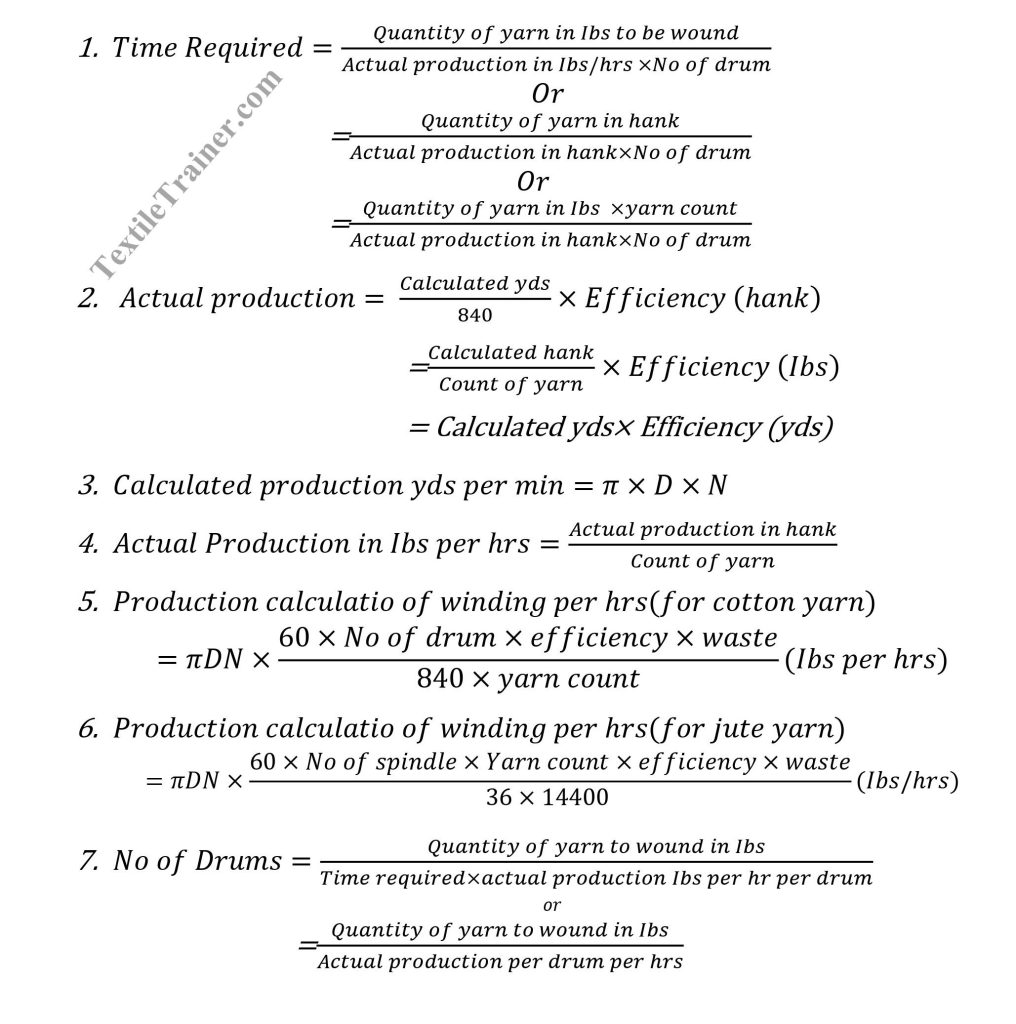
Exercise-1: Calculate the time required winding 400 Ibs of 12’s cotton on 10 drums. The actual production per drum per min is 560 yds.
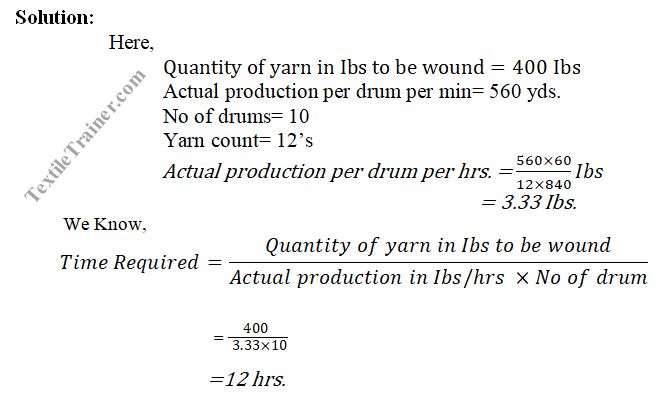
Exercise-2: How much time will be required to wind 2388 Ibs of 20’s Cotton on 40 drums of a super speed cone winder, if the calculated of winding is 1298 yds per min and the efficiency is 80%.
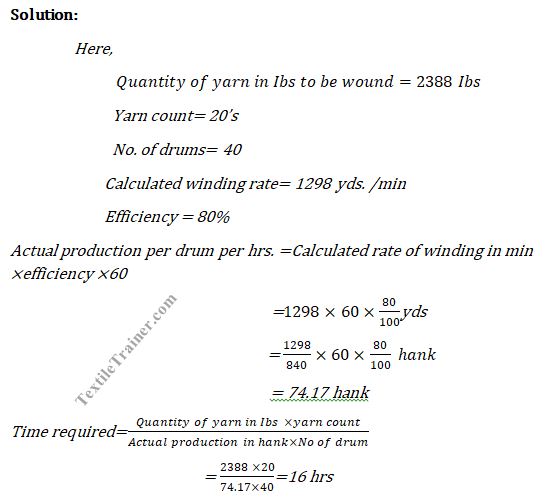
Exercise-3: calculate the time required for winding 2880 hanks of 12’s yarn from hanks on high speed automatic pirn winder with 8 spindles. The rate of winding per min is 420 yds. as off 75%. (self study, Answer-16 hrs)
Exercise-4: calculate the time required for winding 60,000 Ibs of 54’s yarn on 500 high speed winding drums each of which has a calculated rate of winding of 630 yds. The efficiency 90%. ( self study, answer-160 hrs)
Exercise-5: Find out the production per shift of an AutoConer winding machine whose drum speed: 3000 RPM, dia of drum is 3.5 inch, No of drum 40 ,yarn count 20’s and machine efficiency 80%.
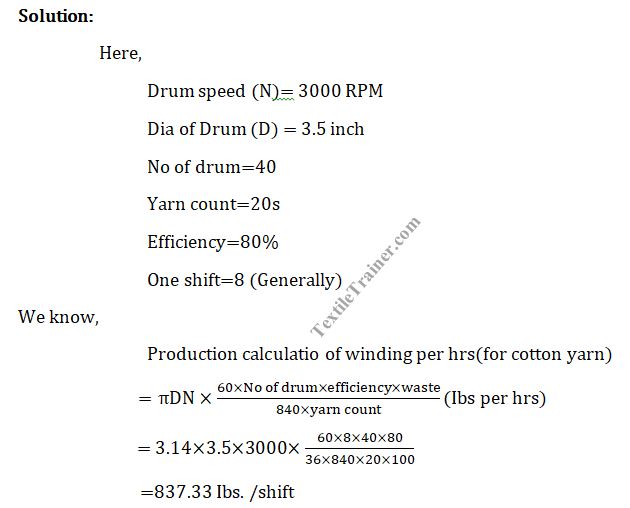
Exercise-6: The winding drum of a high speed cone winder having a diameter of 3 inch makes 2870 RPM. This machine wound 30’s yarn with 82% efficiency. Find the production per hour. (self study, answer- 1.47 Ibs/hrs/spindle)
Exercise-7: Production of pirn winding machine per shift per spindle is 10 Ibs for 30’s cotton yarn. If the machine runs at 600 yds/min. Calculate efficiency.(self study, answer- 87.5%)
Exercise-8: A cop winding machine is winding 34 Ibs/spindle sacking weft yarn which have 15 cop. Cop spindle speed 950 RPM, Cop dia 1.25 inch and machine efficiency 60%. Find the production per shift.
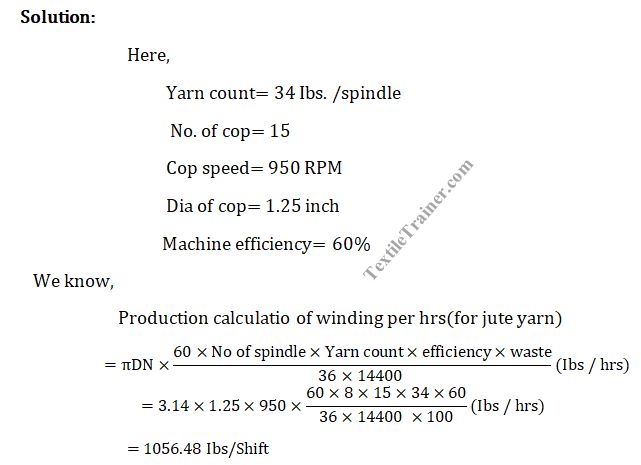
Exercise-9: how many drums should required winding 1000 Ibs of 24’s cotton yarn in 12 hrs if the production per drum per min is 560 yds.
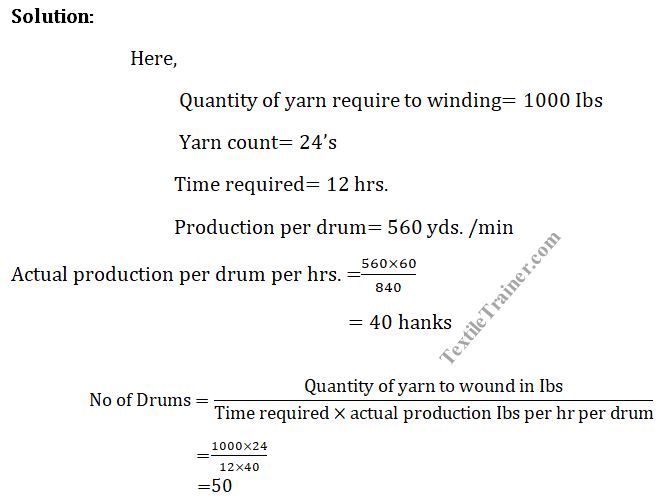
Exercise-10: The rate of winding of modern high speed cone winding machine is 800 yds per min. calculate the no of drums required to wind 388 Ibs of 40’s from ring bobbin in 8 hrs. if efficiency 84% ( self study, Answer- 40)
Conclusion:
Winding calculation ensures precise and efficient yarn packaging. By accurately determining parameters such as package density, traverse length, and winding speed, optimal winding conditions can be achieved. By carefully calculating package density, specific requirements can be met, resulting in well-formed packages with consistent yarn tension. The traverse length can be determined to determine the package width, contributing to its dimensions and density as well as ensuring productivity and quality, considering the winding speed provides efficient yarn winding. In addition to ensuring the proper functioning of winding machinery, accurate winding calculations also play a significant role in yarn quality and processing stages.
Reference:
- Adanur, S. (2001). Handbook of weaving. Boca Raton: CRC press.
- Belal, P. D. (2016). Understanding Textiles for a Merchandiser. Dhaka: LB Graphics & Printing.
- Hossain, M. S. (2014). Introduction to Textile Engineering. Dhaka: Books Fair Publications.
- Rahman, M. M. (2008). Fabric Manufacturing Technology. Dhaka: Books Fair Publications.
- V. Gordeev, P. V. (1982). Cotton Weaving. Russia: Mir Publishers Moscow.




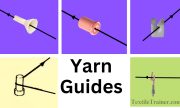


Great post.Really thank you! Want more.
ok, I will try.